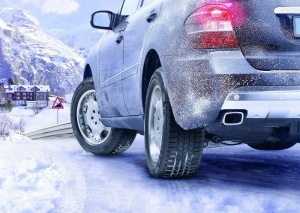
 Summer’s heat, dust, and stop-and-go traffic, will take their toll on your vehicle. Add the effects of last winter, and you could be poised for a breakdown. You can lessen the odds of mechanical failure through periodic maintenance…Your vehicle should last longer and command a higher resale price, too!
Summer’s heat, dust, and stop-and-go traffic, will take their toll on your vehicle. Add the effects of last winter, and you could be poised for a breakdown. You can lessen the odds of mechanical failure through periodic maintenance…Your vehicle should last longer and command a higher resale price, too!
Some of the following tips are easy to do; others require a skilled auto technician.
-
Air Conditioning
A marginally operating system will fail in hot weather. Have the system examined by a qualified technician. Newer models have cabin air filters that clean the air entering the heating and air conditioning system. Check your owner’s manual for location and replacement interval
-
Cooling System
The greatest cause of summer breakdowns is overheating. The cooling system should be completely flushed and refilled about every 24 months. The level, condition, and concentration of the coolant should be checked periodically. (A 50/50 mix of antifreeze and water is usually recommended.) DIYers, never remove the radiator cap until the engine has thoroughly cooled! The tightness and condition of drive belts, clamps, and hoses should be checked by a pro.
-
Oil
Change your oil and oil filter as specified in your manual more often (every 3,000 miles) if you make frequent short jaunts, extended trips with lots of luggage, or tow a trailer.
-
Engine Performance
Replace other filters (air, fuel, PCV, etc.) as recommended more often in dusty conditions. Get engine drive-ability problems (hard starts, rough idling, stalling, diminished power, etc.) corrected at a good shop.
-
Windshield Wipers
A dirty windshield causes eye fatigue and can pose a safety hazard. Replace worn blades and get plenty of windshield washer solvent.
-
Lights
Inspect all lights and bulbs; replace burned out bulbs; periodically clean dirt and insects from all lenses. To prevent scratching, never use a dry rag.
-
Tires
Have your tires rotated about every 5,000 miles. Check tire pressures once a month; check them while they’re cold before driving for any distance. Don’t forget to check your spare as well and be sure the jack is in good condition. Examine tires for tread life, uneven wearing, and cupping; check the sidewalls for cuts and nicks. An alignment is warranted if there’s uneven tread wear or if your vehicle pulls to one side.
-
Brakes
Brakes should be inspected as recommended in your manual, or sooner if you notice pulsations, grabbing, noises, or longer stopping distance. Minor brake problems should be corrected promptly.
-
Battery
Batteries can fail any time of year. The only accurate way to detect a weak battery is with professional equipment. Routine care: Scrape away corrosion from posts and cable connections; clean all surfaces; re-tighten all connections. If battery caps are removable, check the fluid level monthly.Avoid contact with corrosive deposits and battery acid. Wear eye protection and rubber gloves.
-
Emergencies
Carry some basic tools — ask a technician for suggestions. Also include a first aid kit, flares, and a flashlight.
Source: National Institute for Automotive Service Excellence (ASE).
Car Care Tips from the Pros Prepare You for Fall and Winter Driving
 It’s foolhardy to head out in a poorly maintained vehicle in the dead of winter, of course, but even vehicle owners in temperate zones need a car care check as the days grow shorter, note the pros with the nonprofit National Institute for Automotive Service Excellence (ASE), an independent group that tests and certifies the competence of auto technicians.
It’s foolhardy to head out in a poorly maintained vehicle in the dead of winter, of course, but even vehicle owners in temperate zones need a car care check as the days grow shorter, note the pros with the nonprofit National Institute for Automotive Service Excellence (ASE), an independent group that tests and certifies the competence of auto technicians.
“Regular, routine maintenance can help improve your gasoline mileage, reduce pollution, and catch minor problems before they become big headaches,” says Tony Molla, vice president of communications at ASE. ASE offers these car care tips to give you peace of mind during fall and winter driving:
- Before you do anything else, read your owner’s manual and follow the manufacturer’s recommended service schedules.
- Get engine performance and drive-ability problems — hard starts, rough idling, stalling, diminished power, etc. — corrected at a reputable repair shop that employs ASE-certified repair professionals. Cold weather makes existing problems worse.
- Replace dirty filters, such as air, fuel, and PCV. A poorly running engine is less efficient and burns more gasoline.
- As the temperature drops below freezing, add a bottle of fuel deicer in your tank once a month to help keep moisture from freezing in the fuel line. Keeping the gas tank filled also helps prevent moisture from forming.
- Change your oil and oil filter as specified in your manual — more often if your driving is mostly stop-and-go or consists of frequent short trips. A poll of ASE Master Auto Technicians revealed that regular oil and filter changes is one of the most frequently neglected services, yet one that is essential to protect your engine.
- The cooling system should be flushed and refilled as recommended. The level, condition, and concentration of the coolant should be checked periodically. A 50/50 mix of antifreeze and water is usually recommended. Do-It-Yourselfers: Never remove the radiator cap until the engine has thoroughly cooled! The tightness and condition of drive belts, clamps, and hoses also should be checked regularly by a professional technician.
- The heater and defroster must be in good working condition for passenger comfort and driver visibility.
- Replace old blades regularly. If your climate is harsh, purchase rubber-clad (winter) blades to fight ice build-up. Stock up on windshield washer solvent — you’ll be surprised how much you use during the winter months. And don’t forget to always carry an ice scraper.
- Have your battery checked. The only accurate way to detect a weak battery is with professional equipment. However, most motorists can perform routine care: Wear eye protection and protective rubber gloves. Scrape away corrosion from posts and cable connections; clean all surfaces; retighten all connections. If battery caps are removable, check fluid level monthly. A word of caution: Removal of cables can cause damage or loss of data/codes on some newer vehicles, so always check your owner’s manual first. Be sure to avoid contact with corrosive deposits and battery acid.
- Inspect all lights and bulbs. Replace burned out bulbs; periodically clean road grime from all lenses. To prevent scratching, never use a dry rag. Clouded lenses can be refinished by many service outlets or by using a DIY kit found in major auto parts outlets.
- Exhaust fumes inside your vehicle’s cabin can be deadly. Have the exhaust system examined for leaks and problems while the vehicle is on a lift. The trunk and floorboards should also be inspected for small holes.
- Worn tires are dangerous in winter weather. Examine tires for remaining tread life, uneven wearing, and cupping; check the sidewalls for cuts and nicks. Check tire pressure once a month, letting the tires “cool down” before checking the pressure. Rotate as recommended. Don’t forget to check your spare, and be sure the jack is in good working condition. Under-inflated tires or poorly aligned wheels makes your engine work harder and thus use excess gasoline.
- Have your brakes checked periodically for safety and to prevent costly repairs that can be caused by neglect.
- The transmission is often neglected until a major failure. Routine checks and fluid changes at prescribed intervals can prevent very costly repairs down the line.
- Always carry an emergency kit with you: extra gloves, boots and blankets; flares; a small shovel and sand or kitty litter; tire chains; a flashlight and extra batteries; and a cell phone and extra car charger. Put a few “high-energy” snacks in your glove box.
The National Institute for Automotive Service Excellence (ASE) was founded in 1972 as a nonprofit, independent organization dedicated to improving the quality of automotive service and repair through the voluntary testing and certification of automotive technicians. ASE-certified technicians wear blue and white ASE shoulder insignia and carry credentials listing their exact area(s) of certification. Their employers often display the blue and white ASE sign.
For more information, including seasonal car care tips, visit www.ase.com.


